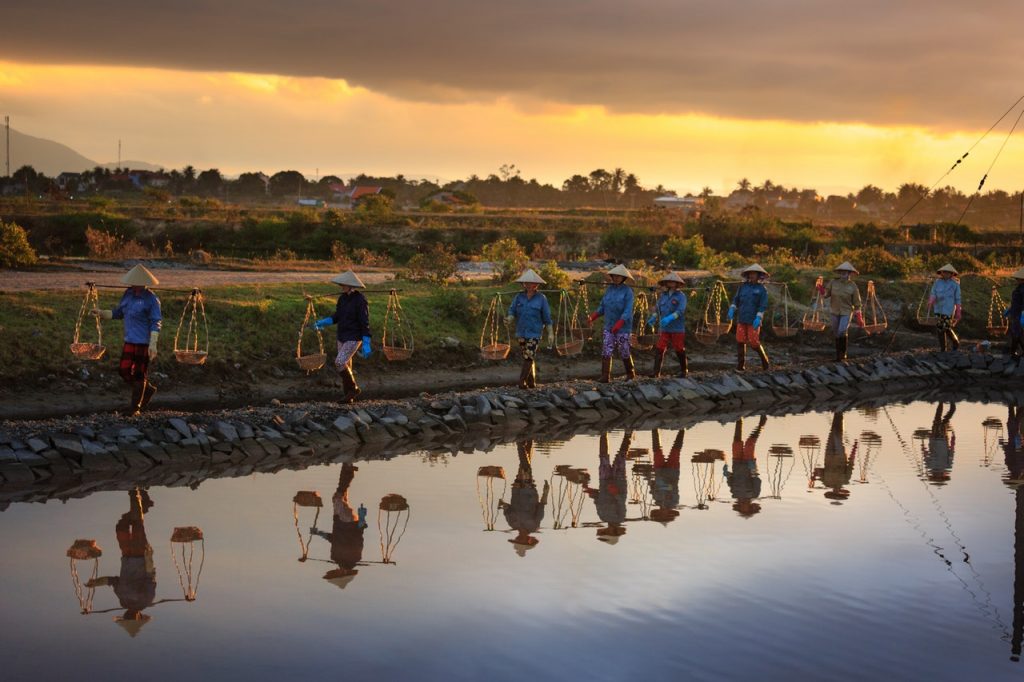
Desalination is the engineering process of extracting fresh water from salty water, for human consumption or agricultural use.
Given that the seas contain about 97.25 percent of all water on the planet and cover over 70% of its area, desalination of seawater would increasingly become an important source of fresh water for many places.
Climate change is disrupting weather patterns and will continue to do so, most probably resulting in extreme weather events, unpredictable water availability, aggravating water scarcity and polluting water sources. Such detrimental effects exert significant influence on the quantity and quality of drinking water that the future generation require to survive.
We should never underestimate the influence of climate change on our lives, but for the purpose of this article, I will just focus solely on water supply, draw out the intricate linkages between our drinking water and climate change, and how environmental regulations might disrupt some public service.
It can be difficult for some to appreciate their drinking water especially if they are from developed countries. Many from these places, can drink straight off the tap, filter the water through the tap before drinking or boil the tap water for consumption. Plus, people in these places usually have the option to buy drinking water from the groceries or arrange for delivery online.
As climate change persists, one of the resultant effects would be rising sea level. Much of the observed sea level rise is due to meltwater from land-based ice sheets and mountain glaciers, which adds to the volume of the ocean. Thermal expansion, or the expansion of ocean water as it heats, contributes a fair bit to sea level rising. There are other factors at play too but do not contribute as much as what I shared earlier.
Rising sea level are causing fresh water to become salty, compromising the critical water resources that the current and future generation rely on for survival.
In the future, water shortage might produce a slew of geopolitical and humanitarian issues, prompting more countries to turn to the sea and previously useless brackish water sources. Desalination is one way to make fresh water from both saltwater and brackish water.
According to a recent report by Grand View Research, Inc., the global water desalination equipment market is expected to reach USD 25.7 billion by 2027, likely to be driven by rising freshwater use in the Middle East, Africa and Latin America. The forecasted growth is an indication of the market’s demand for this technology and its end product.
Just to share a little bit more, there are basically two primary methods of desalination, (1) distillation and (2) reverse osmosis.
Distillation is the most traditional and widely utilised method of desalination. Distillation involves heating a substance to its vaporization point, then collecting the vapor and passing it through a cooling system, where it condenses as water.
Reverse osmosis (RO) is a contemporary technology of water filtration. Osmosis is the separation of freshwater from seawater via a selectively permeable membrane.
Technological advancements are lowering the operating costs of desalination facilities, but the issue is that water desalination is energy-intensive, mostly supported by fossil fuels. As a result, CO2 emissions from water desalination are significant. According to estimates from the Global Clean Water Desalination Alliance, the desalination facilities now in operation globally release around 80 million metric tonnes of CO2 each year, which form less than 1% of the total global emission.

While I agree that one of the most important steps to preventing additional energy depletion and environmental degradation is to strengthen environmental regulations. I argue that we must also consider how environmental regulation on fossil energy consumption impacts critical functioning of important operations such as desalination, and whether or not; we would be able to switch over in time to other energy alternatives.
Environmental regulations, no matter how well-intentioned, if not thought through carefully, could cause significant hardships to the public. This is especially so when done via a blanket mechanism without deeper consultation with industry experts.
Studies are being performed to determine the practicality of using solar energy to power the desalination plants.
Researchers at MIT and from China, have devised a passive solar-powered desalination system that may deliver more than 1.5 gallons of fresh drinking water per hour for every square metre of sun collecting space. For information, the city of New York consumes about 975 million gallons of water in a single day.
For perspective, let’s say we are able to ideally harvest about 10 hours of sunlight per day, this means that we would be able to deliver about 15 gallons of fresh water per day. With this device, we would need about 65 million square metres of sun collecting space to provide enough water for the people in New York City. 65 million square metres of sun collecting space is roughly equivalent to the size of about 12150 football fields. This is slightly bigger than the Bhadla Solar Park in Rajasthan, India, which is currently the largest solar park in the world.
Such infrastructure requires substantial amount of space even though it might possibly provide an efficient, low-cost water source to off-grid dry coastal locations. One solution is to stack the solar panels on top of each other thereby reducing the total area taken but the installation cost would escalate rapidly.
What I am trying to achieve, by going through this case, is to impart a sense of (1) how much desalination contributes to the total global emission, (2) the amount of energy required to supply a city with fresh water and (3) the space requirement if the desalination process were to draw its power source from solar panels. With this, it would be easier to weigh and then assess sensibly for oneself, the total amount of effort to reduce that amount of carbon emission from desalination.
It would be far easier to target the top 20% of the greatest carbon emitters if we want to achieve substantial results in reducing Greenhouse Gases (GHG) emission.
By this, most would already have a sense of what I am going to propose which is firstly, to have deeper consultations with the specific industry experts. With inputs from the industry experts, identify the sectors that have significant contributions to human welfare and does not yet have the capacity to switch over to renewable energy sources at the moment.
Once the mapping is performed and the sectors identified, a roadmap could be broken into several pathways, guiding specific sectors with different timelines towards net zero outcome.
Secondly, once the sectors are identified and then ranked according to the national priority and implementation challenges. A strategy could be designed for each individual track while taking into consideration the investment of financial capital, and research and development effort in areas such as technology, manpower, sectorial rules and regulations, energy supply and other resources. Greater flexibility in the choices of energy sources could be extended to certain sectors such as the water sector, to ensure seamless transition to net zero operating environments, without disrupting public service.
Thirdly, at this point, the greater clarity of each sector’s status allows for stratospheric assessment across sectors, mainly to check if there are any competing demands in resources especially in the area of manpower and energy supply. With this, technology could be leveraged, adjustments might be made, and buffers built to ensure resiliency in each system and how they operate in tandem with each other.
Fourthly, mechanisms for adjustments must be weaved into the roadmap to ensure relevancy long after it has started. For example, certain sectors could be allowed to operate off fossil fuel sources for longer period before switching to renewable energy source. However, if the technology development progresses faster than anticipated, then the sector could wean off fossil fuel earlier than planned.
There will always be gaps between policies and operational work therefore effort must be made to ensure sufficient information flow from the ground implementation to policy construct and vice versa.
Once again, I would like to reemphasise that environmental regulations, no matter how well-intentioned, if not thought through carefully, could lead to significant hardships to the public. Deeper engagement and consultations with sectorial experts and practitioners is essential for better policies.












